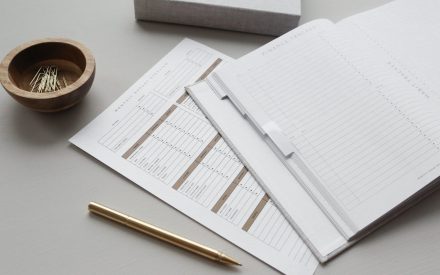“Plan for profits and then work your plan.” That phrase best describes the value of cash flow budgeting. The planning function of management is one of the most important for the farm manager and completing a cash flow budget is an excellent tool for doing so.
The cash flow budget is a plan of how cash will be coming into the operation (cash inflows) and leaving the operation (cash outflows). The keyword is “cash.” If cash is not entering or leaving one’s pocket, then it does not go on the cash flow budget.
The cash flow budget provides three primary values for the farm manager.
- Forces the planning function of management.
- Provides a means of communicating the amount and timing of borrowing and investment needs with the lender.
- During times of low profitability, cash flow is a survival strategy.
Completing the cash flow budget requires that the manager plan ahead, know and/or estimate what they will raise, input needs, input costs, output prices, capital asset replacement, sales or purchases, and other factors that could either provide or take cash from the business.
Developing Your Cash Flow Budget
Cash Flow Budget Tool
The Extension Cash Flow Budget Tool consists of excel worksheets that provide a means and help in developing the cash flow budget. This Cash Flow Budget Tool is more involved than other cash flow calculators in that it offers specificity in planning the marketing of products and sensitivity analysis. As with many spreadsheet tools, there are tradeoffs between simplification, accuracy, and depth. The Cash Flow Budget Tool consists of a main “tab” or worksheet “CASH FLOW” and additional tabs support the development of the cash flow budget.
Utilize the Explanation of Cash Flow Budgeting spreadsheet tool instructional document for a short description for using the tool.
Share your feedback on this tool by contacting our Extension team at farms@extension.wisc.edu
What makes up a cash flow budget?
A cash flow budget consists of cash coming in (+) or leaving (-) the business.
+ Cash inflow from operations
+ Capital assets sales
+ Non-farm sources of income which should be included if used to pay farm bills
– Cash outflow from operations
– Capital asset purchases
– Non-farm outflows of cash including family living
– Debt Service
+ New Borrowing
= Net Cash Flow
“Net Cash Flow” must be positive or at least zero (breakeven). While it can be negative on a spreadsheet, in real life it must be at least zero even if that means bills and debt service are not getting paid.
What the cash flow budget is not
The cash flow budget is not the same as an income statement, especially an accrual income statement, and in-fact they can be quite different. The cash flow budget does not include non-cash items like depreciation, inventory changes and changes in accounts receivable/payable. However, the cash flow budget does include principal payments, cash payments for capital assets and new loan proceeds that the income statement does not include.
A farm manager can cash flow very nicely for a while by just selling a few cows, pieces of machinery, acres of land or just allowing accounts payable to continue to build. The accrual income statement will quickly identify this situation as unprofitable, but the cash flow budget will see a positive. Positive cash flow does not mean profitability or visa versa.
The cash flow budget is also not a substitute for the enterprise budget. The enterprise budget includes depreciation and opportunity costs, both of which are non-cash items not found on the cash flow budget.
Test your knowledge of cash flow budgeting
True or False: My cash flow budget is a positive $75,000, which means if all goes according to plan, I will have a profitable year.
Answer:
FALSE! depends on where the cash came from. Cash flow budget is not the same thing as the income statement
True or False: Depreciation is a “real” cost that reflects the loss in value of a capital asset due to wear, tear, and obsolescence. However, it is a non-cash cost so it should not be on the cash flow budget.
Answer:
TRUE! Only actual cash inflows and outflows go on the cash flow budget)
Which of the following belong on a cash flow budget?
- Seed purchased on credit from input supplier
- Aunt Hazel’ 100K inheritance
- Purchase of new bulk tank
Answers:
- (No)
- (It depends. If used to pay cash expenses, yes.)
- (yes assuming cash expense)
Examples of cash flow budgeting on farm
J&J Dairy Farms is an example of the value of being “forced” to plan operations in the next year. To complete their cash flow, J&J Dairy had to estimate what price they would receive for their milk. It forced them to consult with market advisors, assess where in the cycle the industry was at, look at futures and consider the current supply and demand situation. No one knows what could happen to prices especially a year out, but J&J saw several indicators that the risk of price movement looked to be towards lower prices. It caused them to consider and pull the trigger on some marketing actions to secure the prices available today for a portion of their expected production. It also gave them a benchmark to watch as the year unfolds. Just the process of completing the cash flow budget led them to market planning as well.
S&S Grain LLC is another example of the value of planning resulting from the cash flow budgeting process. S&S Grain knows they have to replace their combine this next year. The cash flow budget enables them to plan ahead for the best time to trade and also communicate far in advance with their lender what their borrowing needs will be. They also will have knowledge of the impact on cash and knowing that helps in shopping and negotiations.
B&B Grain and Livestock Company has a meeting with their lender next week regarding borrowing needs for the year ahead. B&B has completed their cash flow budget and thus they know that barring significant changes in the shocks of life they will have need for short-term borrowing needs in the 1st, 3rd and 4th quarters. But, they will have a significant surplus of cash in the 2nd quarter when they sell their cattle. So, they have two discussions they want to have with their lender. One is setting up an operating line of credit and repayment terms for the times of cash shortfalls. Second is what is the optimal use of the cash surplus when they have it. Should they pay off debt ahead of time and save interest or should they invest it and earn some interest. It will be nice to head into the year knowing and already have ready the borrowing and investment needs.
How do you increase cash flow?
Increasing Cash Inflows from Operations
One way to increase cash flow is increasing normal operational sales. Areas to consider include production, price and new or more enterprise activities. Increasing custom work and selling market inventory if it is available are two ways to increase cash flow.
More impactful is generating greater revenues from the primary source of income (milk, grain, feeders, etc.). Revenue is from production multiplied by price. Therefore, an increase in production and/or price increase cash inflows. In order for net cash flow to be greater increasing production or price must be relatively greater than any associated costs.
Benchmarking your operation may be a way to determine if there is potential for greater production efficiency – more milk, more bushels, more calves, etc. per unit of costs. Feed losses, death loss, conception rates, timeliness of planting, variable rate applications and many other factors might be a means for improving production efficiency.
Marketing may be a means of securing a better price, but marketing tends to be more successful at securing a known price ahead of time versus a “higher” known price ahead of time. But, it is a tool. Marketing a value added trait may also be a way to increase sales price.
Increase Capital Asset Sales (land, tractors and cows)
Selling capital assets is a way to increase cash inflows. However, it is a double-edged sword – as you sell capital assets you also lose the future income generating capacity of that asset. For example, you can sell ten cows today and generate cash flow, but then you no longer have those ten cows to generate milk and calves to sell in the future. Factors to consider include:
- Are there underperforming or underutilized assets?
- Are there activities that can be outsourced for less cost than owning the assets such as hiring a custom harvester and selling the associated harvest equipment
- Are there underperforming enterprises. For example, if you never make any money on the 200 acres of grain you farm then an alternative is to rent the ground out (or sell it) and sell the associated machinery.
- With any of these options, there maybe tax consequences to consider.
Increase Cash Inflows From Non-Operational Sources
Many farm families bring income and cash flow in from non-farm sources. Off-farm employment is a major source of potential cash flow for the farm business and one that is often not subject to the ebbs and flows of commodity prices and may come with other benefits such as health care and retirement. Other potential sources of non-farm cash includes
- Contributed capital from family or non-family investors
- Agritourism
- Hunting fees
- Horse boarding
- Storage of boats and campers
- Non-farming enterprises that make use of some farming assets such as
- Repair/maintenance shop
- Record-keeping
- Seed sales
- Welding shop
Decrease Cash Outflows From Operations
A second overall way to increase cash flow is to decrease the cash leaving the farm business. Decreasing variable costs per unit of production is one means to increase cash flow by reducing cash outflows. This may be accomplished by:
- Negotiating lower lease payments
- Using cheaper feed ingredients
- Better feed management, less wastage
- Variable rate application
- Early detection health protocols
- Lower labor costs or greater labor productivity
- Collaboration
- Bulk buying of inputs
- Shared field work
- Manure-Fertilizer agreements
- Shared machinery/equipment
- Shared labor
The key is assuring that production is not negatively impacted or at least is less negatively impacted than the gain from lower costs.
Delay/Eliminate Capital Asset Purchases
Can a piece of equipment be held for another year versus trading it this year? What will the potential repair costs be compared to the new piece? Can the purchase of an asset be held off in lieu of custom hiring the work done? Am I cash ahead by leasing versus buying? If purchase is needed can I negotiate a lower purchase price?
Decrease Non-Operation Cash Outflows
Family living withdrawals are of two types. One is the “normal” compensation for labor and management that is to be expected from the work provided. Over and above that is additional withdrawal that drains cash from the operation. The latter is fine and expected in times of good cash flow. However, when cash flow is tight, hopefully for the short-term, then a tightening of the belt is a means of increasing net cash flow. Perhaps the big vacation needs to be put off in lieu of something more local this year. Remodeling the house, boat purchase and etc. should not be forgotten, just perhaps delayed until times of better cash flow.
Are there “family bonuses” not related to farm operations or compensation that could be eliminated or at least delayed. Potential examples include:
- Entertainment
- Gas for and repairs of non-farm vehicles
- Insurance premiums
- Room and board
- Costs associated with tractor pulling
- Horses
Decreasing Current Debt Service
For many farm businesses, debt service is a major source of cash outflow. There may be ways to work with creditors to reduce debt service in the short-term. Examples include:
- Restructuring loan amortizations, that is, lengthen repayment terms, thus reducing current payments
- Interest only payments
- Debt consolidation with a resulting lower current payment
- Lower interest rates
- Principal write-off (unusual and usually associated with much bigger problems than short-term cash flow)
The danger with any of these is that it adds debt service in the future. For example, an interest-only payment adds principal that must be paid back in the future and with interest. There is also the danger of accumulating debt service for reasons that are no longer relevant. For example, consolidating a three-year tractor loan with other debts and lengthening the amortization (pay-back time) using a mortgage or second mortgage may result in paying back loans on that tractor at some point when the tractor no longer exists. However, in the short-run, these may be ways to increase net cash flow.
Increasing Cash Inflow Through New Borrowing
Finally, when other avenues have been exhausted the last tool in the box is new borrowing to cover negative cash flow. In many situations, this is a normal part of the business. For example, an operating line of credit in a grain operation covers the purchase of seed, fertilizer, and other inputs until the grain is harvested, sold and the operating note is paid back. Care should be taken to not use operating loans to pay for capital assets. It is also perfectly normal to increase term debt for capital assets, for example, a three-year term loan for a piece of machinery, fifteen-year for a new building, or twenty-five years for land.

 ▶ Watch: Financial Statement and Analysis Spreadsheet Walkthrough
▶ Watch: Financial Statement and Analysis Spreadsheet Walkthrough Enterprise Budgeting: Review of a single enterprise in a farm business
Enterprise Budgeting: Review of a single enterprise in a farm business DuPont System for Financial Analysis
DuPont System for Financial Analysis


